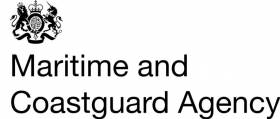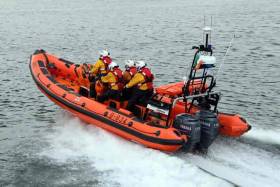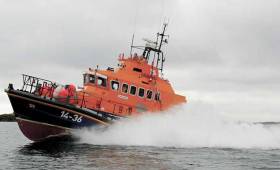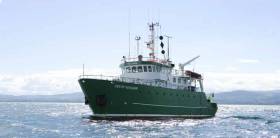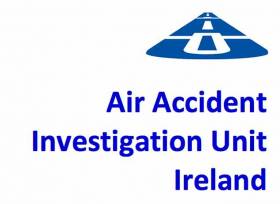Displaying items by tag: Coast Guard
UK Boating Community Invited to ‘Have Their Say’ on New Proposals for Pleasure Vessels
Members of the boating community in the UK are being encouraged to ‘have their say’ on the Maritime & Coastguard Agency’s new Code of Practice for Intended Pleasure Vessels and its supporting Guidance Notices as well as some new Exemptions.
The public consultation launches today 1 August and runs for 8 weeks until the 26 September.
The Code of Practice for Intended Pleasure Vessels (IPV Code) and its supporting Guidance Notices – which will be introduced on 1 January 2019 - addresses temporary commercial use either for business purposes or as a race support boat.
The MCA is urging the boating community to read through the proposals on how they plan to make the water a safer place for everyone while giving the opportunity to legitimately operate commercially on a temporary basis for certain activities. The IPV Code team will be available to discuss the new framework at a series of key dates throughout the Southampton Boat Show.
Additionally, the MCA is replacing Marine Guidance Notice 538 on Pleasure Vessels which introduces exemptions that mark a significant positive step for the Pleasure Vessel manufacturing sector in the UK and phases out the use of ORC liferafts.
Ian Lardner, Head of Marine Technology for the MCA said: ‘We have been working extremely closely with our partners at British Marine (BM), Royal Yachting Association (RYA) and the Yacht Brokers, Designers and Surveyors Association (YBDSA) to bring about this very positive and significant step for the boating community. The new IPV Code allows people to use their Pleasure Vessels on a temporary single-voyage basis for sea trials, deliveries or race support activities, without using the existing commercial vessel codes which are intended for a more longer-term commercial use. We’re providing a simple means of compliance to rules that have always existed, with negligible burdens. We all think this a huge step forward and we hope as many people as possible will take the time to read through the consultation to see if there are any further developments we could consider.’
RYA Cruising Manager, Stuart Carruthers, said: 'The Introduction of the IPV Code and the guidance for owners to provide race support activities for a yacht or powerboat race is a very positive step and provides a much-needed solution to a number of problems that race organisers and support staff have struggled with in the past.
'In addition, the application of the IPV Code to vessels used at sea on a single-voyage basis by owners, brokers, surveyors and repairers for business purposes relating to sale, repair, post-repair or mid-survey sea trials, customer sea trials and for vessel delivery in connection with the business purpose is also welcomed and it is very much to RYA members’ advantage for this code and associated MGNs to be adopted.'
Bas Edmonds, RYA Racing Services Manager, added: 'It’s extremely pleasing to see the MCA support the delivery of our sail racing by looking to exempt those boats supporting race activities. The IPV Code and associated MGNs provide a framework of achieving compliance for owners and parents wanting to support the sport, which is hugely welcomed by the RYA.'
British Marine’s Technical Manager, Ross Wombwell said: ‘This Code of Practice for sea-trialling and transportation provides the industry with an affordable and achievable solution, and provides much-needed clarity on what had been a regulatory grey area for our members and boat owners for a number of years. British Marine is rightly proud of the work that it has done, supported by many of its members, alongside the regulator (the Maritime & Coastguard Agency), the Royal Yachting Association (RYA) and the Yacht Designers & Surveyors Association (YDSA), to develop this new process and guidance.
‘Now we need members and owners to review this Code of Practice and let us and the MCA know their thoughts - on the practicalities of applying these new rules, the benefits they bring, the costs involved etc.
‘British Marine is on hand to answer any queries from its members on this new Code of Practice and we will be engaging the membership further over the coming months, with Q&As and guidance available at TheYachtMarket.com Southampton Boat Show in September.’
Once the external consultation has closed, the MCA will draft a final set of proposals of the new IPV Code. Any new development changes within the Code will be published accordingly.
More information about the public consultation can be found on the MCA website here: Code of Practice for Intended Pleasure Vessels
If you would like to contribute your thoughts to this public consultation or if you require a hard copy of the consultation, please email [email protected]
1) Introducing the draft new IPV Code
The MCA has worked closely with British Marine, RYA, and the Yacht Brokers, Designers and Surveyors Association (YBDSA) to develop a new Code to allow for Pleasure Vessels to be in temporary commercial use at sea for specific purposes (explained below). This is a very positive step to provide a framework for what we know is wanted by the Pleasure Vessel sector.
2) When does the Code go live and can I have a say?
It is due for publication on 01 January 2019 but we’d like your feedback through public consultation on this and some associated MGNs between 01 August 2018 and 26 September 2018. The MCA, RYA and YBDSA will be on hand at the Southampton Boatshow to answer any specific questions about this new Code.
3) What does the IPV Code Do?
The IPV Code is split into two parts; 1) Use at sea for business purposes, and 2) Use at sea as a race support boat. In each part there are requirements for owners and requirements for operators. For Part 1, Operators are the people using the boat for their business, which are manufacturers, brokers, repairers, surveyors and in some cases owners can also be operators too. For Part 2 the Operator is the person using the Race Support Boat.
4) IPV Code - Temporary Commercial Use for Business Purposes
Part 1 of The IPV Code allows for Intended Pleasure Vessels (boats which are normally Pleasure Vessels) to be in temporary commercial use at sea on a single-voyage basis for business purposes relating to repair, post-production, post-repair or mid-survey sea trials, customer sea trials, or vessel delivery outside the definition of Pleasure Vessel. It is applicable to Intended Pleasure Vessels of any size which are United Kingdom vessels wherever they may be. It also applies to other Intended Pleasure Vessels operating from United Kingdom ports whilst in United Kingdom waters.
5) IPV Code – Temporary Commercial Use as Race Support Boat
Part 2 of the IPV Code allows for Intended Pleasure Vessels to be in temporary commercial use at sea on a single-voyage basis as a Race Support Boat for the purpose of Race Support Activities of yacht or powerboat racing affiliated to the National Governing Body of the Sport. It provides a standard for small (<8m) Intended Pleasure Vessels used for no more than ten occasions per calendar year as a Race Support Boat outside the definition of Pleasure Vessel either by the Owner or persons authorised by the Owner to do so. It is aimed at open boats such as Rigid Inflatables but does not prohibit use for small (<8m) decked vessels. Operators of Race Support Boats are advised that other Codes of Practice may be more appropriate for decked vessels.
6) What will you need to do as an Owner of a Pleasure Vessel
If you own a Pleasure Vessel (irrespective of whether it is owned by an individual or a company) then you are responsible for making sure that either all use is in accordance with the Pleasure Vessel definition or, if not, then appropriate commercial standards are met. If your Pleasure Vessel is going to be taken to sea for business purposes or as a race support boat on a temporary basis then it’s important that you study the draft new Code and have a look at the draft new MGNs. We’d really appreciate your feedback but it will also explain what requirements you need to meet.
7) What will you need to do as an Operator of a Pleasure Vessel
If you are taking a Pleasure Vessel to sea for business purposes as an owner, manufacturer, broker, repairer or, surveyor then you become an Operator in accordance with this Code of Practice. If the use is not temporary then you would need to seek further advice from the MCA but if the use is temporary (according to the IPV Code) then you can use this simple and easy to meet standard. The very basic requirement for use as an Operator is that you will need to have a safety management system in place but this need not be complicated. We would really appreciate your feedback so please do take a look at the Code and the associated MGNs before 26th September 2018. If you have any questions or concerns, please talk to the MCA, BM, YBDSA or RYA.
8) MGN to Replace MGN538
The MCA has also re-written the MGN on the regulations applicable to Pleasure Vessels. This gives a better explanation of the framework, it introduces the term “Intended Pleasure Vessel” and it includes two key new things. Firstly, we have amended the Class XII LSA Exemption for Pleasure Vessels of 13.7m in length and over to phase-out the use of ORC liferafts (this is relevant to Pleasure Vessel owners). Secondly, we have introduced a new Exemption which allows for RCD compliant vessels to not follow Class XII Regulations for certain fore protection measures (this is relevant to Pleasure Vessel manufacturers). Finally, the entire document has had a complete re-fresh and we’ve update all references and improved the flow and simplified the explanations. That being said, we’d still really appreciate your feedback so please do take a look at the draft and let us know what you think.
Coast Guard Warns of Heavy Swell on Atlantic Coast
The Coast Guard advises caution to public as Met Éireann warns of heavy swell on Atlantic Coast later on Sunday.
Members of the public have been urged to heed the advice of the Coast Guard as Met Éireann has issued a status yellow wind warning with some very strong west, veering northwest winds expected to affect western and south western coastal counties later Sunday, overnight and into Monday morning with very high seas along the coasts during this period.
The Coast Guard advises the public to be careful on exposed coasts, cliffs and piers, harbour walls and promenades along the Atlantic seaboard particularly at high tide.
Remember to Stay Back, Stay High and Stay Dry.
If you see someone in difficulty in the sea, on the shore dial 999/112 and ask for the Coast Guard.
Overdue Dinghy Sailor's Boat Found Without Anyone on Board
A 90-year-old sailor is feared missing after his empty dinghy was found adrift off the Welsh coast.
Arthur Ray Taylor, known as Archie, was last seen at 9.30am on Saturday, when he left his accommodation to take his dinghy out from Gwbert boat club, Ceredigion, Dyfed-Powys Police said.
A large air and sea search was launched by the Milford Haven Coastguard and RNLI after they were alerted that he had not returned that evening.
A Coastguard spokesman said: "At 5.15pm on Saturday the Coastguard was contacted about an overdue dinghy sailor, aged 90 years old, who had not returned after a trip out on the water during the day and his small boat was found in Cardigan without anyone on board.
"The Coastguard rescue helicopter from Caernarfon, Cardigan, Gwbert and Moylegrove Coastguard Rescue Teams and RNLI lifeboats from Cardigan and Fishguard were all involved in the search along with Dfyd Powys Police.
"After a thorough search of the area, nothing further was found and the search was suspended overnight.
"Milford Haven Coastguard has resumed a search operation in the area this morning."
Police have appealed for anyone who has seen Mr Taylor or knows his whereabouts to contact them.
They described him as 5ft 4ins, of slim build and with grey hair. He was wearing a navy jumper and dark grey waterproof jacket.
Sightings or information can be reported to police by dialling 101 and quoting incident reference 251 of April 15.
Killybegs Coast Guard RIB Takes Dive Boat Under Tow
The volunteer crew of Bundoran RNLI Lifeboat were requested to launch this afternoon to assist a dive boat with 4 persons on board, which had broken down.
The alarm was raised around 1:50pm with Malin Head Coast Guard who immediately requested the launch of the Bundoran Lifeboat and also tasked the Killybegs Coast Guard RIB.
The Bundoran Lifeboat launched at 2pm to the dive boat which was around a mile north of Bullockmore, (west of St John’s Point). The Killybegs Coast Guard rib took the dive boat under tow to Killybegs Harbour with the Bundoran Lifeboat accompanying both vessels.
On returning to the station around 90 minutes later, Volunteer Lifeboat Crew member with Bundoran RNLI Richard Gillespie said ‘the people on board the dive boat were absolutely correct to call the Coast Guard and have ourselves and Killybegs launched. While they were in no immediate danger, the longer they left the call, the more chances there were of something going wrong. We would always encourage boat users to contact the Coast Guard on the first sign of a problem so we can be there to help sooner rather than later.’
Hoax Calls To Rescue Services Put Lives at Risk
The Bangor and Donaghadee RNLI lifeboats launched last week following a ‘Mayday’ call. It was a hoax. Someone decided to make a false call and those two lifeboat crews in Northern Ireland started a search for what was reported to be “a kayaker in trouble… “ Afloat's report of the incident is here.
A rescue helicopter was also called in from Prestwick in Scotland… A search was carried out and the Coast Guard established the call as “an elaborate hoax..”
Bearing in mind the tragedy of Irish Coast Guard helicopter R116 and with the search for two of that crew still continuing, the hoax call-out which resulted in Bangor and Donaghadee lifeboats being launched and the Prestwick helicopter called in from Scotland, was shocking…. So on my Podcast this week I highlight the serious dangers caused by hoax call-outs.
Listen to the Podcast here and the response of the RNLI.
Fishing Boats Join Search For #Rescue116 Crew in Largest Open Water Search in History of the State
The Coast Guard Rescue Coordination Centre in Malin is managing the surface search for the two missing crewmen of Rescue 116 this morning with a reported large number of fishing vessels that have offered their services.
The search is being desrcibed as the 'Largest open water search in the history of the Irish State'. Calm conditions off the West Coast have enabled searchers to get underway as planned.
No trace of Paul Ormsby or Ciarán Smith was found when the wreck of the Sikorsky S-92 helicopter was lifted from the sea bed off Black Rock in Co Mayo last weekend, as previously reported on Afloat.ie.
While underwater operations are ongoing, a fleet of fishing vessels from Killybegs this week are sweeping the Atlantic seaboard at first light this morning for any sign of the missing coastguard airmen.
More on this in our post yesterday here
Search Continues for Missing Crew of R116
Remote Operations Vehicle (ROV) operations, conducted by Marine Institute specialists on-board the Granuaile in conjunction with An Garda Síochána and the Air Accident Investigation Unit continued overnight and are ongoing. Wind has freshened overnight, which may constrain certain elements of the proposed search until Sunday, but conditions remain favourable for time being. Air, surface and shoreline searches are ongoing today, supported by Coast Guard, RNLI and Civil Defence volunteers. The Shannon based Coast Guard helicopter will conduct aerial searches later today. The Air Corps are also supporting the search.
Also the Coast Guard wishes to request all mariners, particularly those not participating on Saturday 8th April, to continue to keep a good lookout for any material associated with R116 and report any sightings to Malin Head Coast Guard Co-ordination Centre.
The Maritime & Coastguard Agency’s new Head of Maritime Operations, Julie-Anne Wood, has made history by becoming the first woman to achieve this rank in the history of Her Majesty’s Coastguard.
The role of Head of Maritime Operations heads up the National Maritime Operations Centre in Fareham and the 10 Coastguard Operations Centres that co-ordinate search and rescue around the UK coast. It is one of the most senior roles in HM Coastguard, part of the Maritime & Coastguard Agency, and up until now, the role has always been held by a man.
Julie-Anne Wood began her Coastguard career in the Welsh coastal town of Milford Haven in 1999 as a part-time Coastguard Watch Assistant. Before that, she ran her own business providing safety training to fishermen and merchant seamen in Wales. An opportunity for a permanent Coastguard Watch Assistant came up and in Julie-Anne’s words, she ‘never looked back’.
Over the next nine years, Julie-Anne progressed through the ranks to Watch Officer, Watch Manager and then Rescue Co-ordination Centre Manager in 2008. In 2011, her career changed direction, where she fulfilled her long-term goal to become a Coastguard Technical Trainer within the HR team. In 2013, she became head of Technical Training and Standards and in 2014 she temporarily covered the role of Head of Maritime Operations. In January 2017, she was appointed to the position permanently.
Julie-Anne says she didn’t set out to make HM Coastguard history. It was just a natural advancement of her career. ‘It’s a huge responsibility and a position that I’m very honoured to hold. What may have once been a male-dominated industry is very different these days. The Maritime & Coastguard Agency has incorporated women in everything they do. In my experience, there have been no restrictions. I have never allowed my gender to get in the way of my career – that’s one of the great things about HM Coastguard – the only limits on women are those that are imposed by themselves.
‘I am fortunate to be surrounded by an extraordinary team of strong women and men who are driven, talented and deliver an incredible service 24 hours a day.'
Despite her success, Julie-Anne has said that her proudest moments are still engrained in bringing people home to their families. ‘Every rescue is different, but the feeling you get when we’ve rescued someone in their darkest hours still makes a huge impression on me emotionally. There is no better feeling than seeing families reunited and know that you’ve played a part in that.’
The AAIU in consultation with An Garda Síochána, the Navy, the Coast Guard, the GSI and the Marine Institute wish to advise that following initial Remote Operated Vehicle (ROV) operations the wreckage of R116 has been positively located on the sea bed on the Eastern side of Black Rock, at a depth of approx. 40m.
Operations are continuing but are weather dependent.
AAIU Statement on Investigation into the Loss of R116
The AAIU wishes to extend its sincere sympathies to the families and friends of the crew of R116.
The Chief Inspector of Air Accidents, Mr. Jurgen Whyte, in consultation with the appointed Investigator-in-Charge, Mr. Paul Farrell, wishes to make the following statement.
An AAIU investigation into the circumstances of the loss of R116 is underway. As with all AAIU investigations, this Investigation will be evidence based.
The Investigation has been working with the Garda Síochána, Coast Guard, Irish Air Corps, the Irish Marine Institute, and many local persons and agencies with the primary objective of locating and recovering the missing crew members.
In addition, the AAIU is anxious to recover and examine as much wreckage as possible, and in particular to recover the combined voice and flight data recorder (“black box”). The AAIU, in accordance with international convention, has an Accredited Representative from the US National Transportation Safety Board (as state of design and manufacture); that representative has advisers from the US Federal Aviation Administration and the aircraft manufacturer. The AAIU has also received assistance, support and advice from the UK Air Accidents Investigation Branch two of whose inspectors attended Blacksod.
A significant amount of wreckage has been recovered from the sea and this has been logged and will be brought to the AAIU wreckage facility in Gormanston, Co Meath, for detailed examination.
Furthermore, the AAIU has visited Black Rock Light House, on the approaches to Blacksod bay, which is close to the last recorded position of the helicopter. Some helicopter wreckage has been recovered from the general area of Black Rock Light House. This wreckage is primarily from the tail area of the helicopter. At this early stage in the investigation it is not possible to be definitive about the exact nature of damage to the recovered wreckage or indeed the circumstances of the accident. However, there appears to be marks on some of the recovered wreckage which are consistent with the tail of the aircraft contacting rocky surfaces on the Western end of Blackrock.
The Investigation has not yet definitively identified the initial point of impact.
Equipment aboard surface search vessels has detected a signal which is believed to be from the underwater locator beacon attached to the aircraft’s “Black Box”. This signal points toward an area which will be the focus of further, multi-agency investigation activities at the earliest opportunity, subject to weather.


























